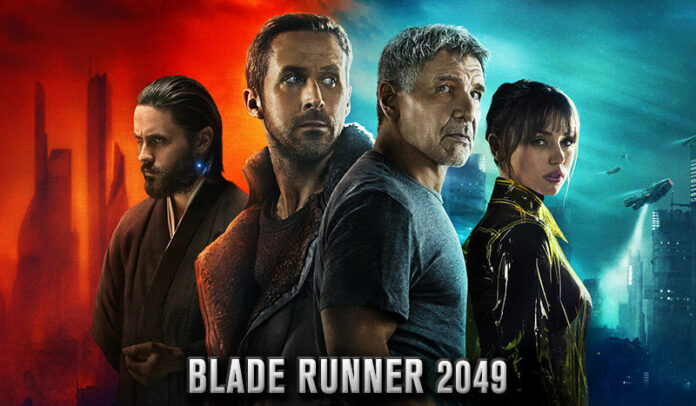In 1983, Ridley Scott’s astoundingly lyrical sci-fi-noir film Blade Runner took audiences to a place they had never been before. Set 30 years later, Denis Villeneuve’s Blade Runner 2049 has a greater “cool factor” than the original. The dystopia of Greater Los Angeles now stretches south to the trash dump that used to be San Diego, and east to the nuclear wasteland that used to be Las Vegas. An elite team of “Blade Runners” cover the entire region to “retire” (kill) any rebellious replicant (bioengineered slave laborers) who get a little too “uppity.” Correcting the flaws of the limited life-span original replicants, the new and imroved models are made in two versions which their uber-industrialist manufacturer labels “bad angels” and “good angels.”. I have sworn to the powers that be not to give away too many plot secrets, but it is helpful to know that two of the “angel” replicants are named Joi and Luv. One other thing, Harrison Ford returns as Deckard.
Both movies are based upon a short story by sci-fi writer Philip K. Dick entitled Do Androids Dream of Electric Sheep. Dick often said that his stories were strongly influenced by Jung’s archetypes of collective unconscious, group projection and personality theory which is why the creation of replicant “memories” plays such a crucial role in these films. A child of the Great Depression, his twin sister died when she was an infant, his parents divorced when he was five, and his mother placed him in Quaker schools until moving to the Bay Area where Dick graduated from Berkeley High School and briefly attended UC Berkeley. Studying psychology and philosophy, Dick determined that “the world is not completely real,” and further, “there is no way to confirm it actually exists.”
He dropped out of college due to anxiety attacks and began using (and abusing) prescription and street drugs to “cope better with life.”
Watching Blade Runner 2049, the similarities between Dick’s life and the lives of various replicants are obvious. Retired Blade Runners Deckard and the enigmatic origami-maker Gaff ( Edward James Olmos) self-medicate with alcohol. While the new Blade Runner, Officer K (Ryan Gosling), visits the seediest part of town to score with his drug supplier. There is no ambiguity this time that K is a replicant. His tough-as-nails handler, Lieutenant Joshi (Robin Wright) rubs his face in it every chance she gets. For solace, K relies on his live-in, hologram girlfriend, Joi (Ana de Armas), and uses his bonus money to upgrade her program.
CG technology means that the cityscapes and desert wastelands are even grittier this time. Cinematographer Roger Deakins films through the toxic rains, duststorms, snowfalls, and neon-lighted uber smog created by Dennis Glassner’s production design team—and manages to make it beautiful. Still deadly, but beautiful all the same. I can’t say the same for composer Benjamin Wallfisch’s electronic soundtrack. The 1982 music was by Greek composer Vangelis (who did the evocative themes for the olympic runner film, Chariots of Fire), and Wallfisch’s musical collaborator Hans Zimmer even utilized a late 70’s Yamaha analog synthesizer like the one Vangelis used. Not content with that retro-sound, Wallfisch says in interviews he wanted to “celebrate that sound [but] reinvent if for a whole new story.” He tried too hard, and at times, the noise coming from the speakers sounds like the harsh blare of 50 untuned sackbutts (14th Century trombones). I wished that I had some earplugs.
I know that many of you will feel uncomfortable with the movie’s measured pace. Ridley Scott is the executive producer, and this is a deliberate throwback to the original Blade Runner film. So instead of the story zipping along at the speed of the flying Peugeots, the filmmakers want to be sure audiences have time to digest what they have just witnessed. In other words, they want you to think.
Comments? E-mail gi*********@*****st.net









